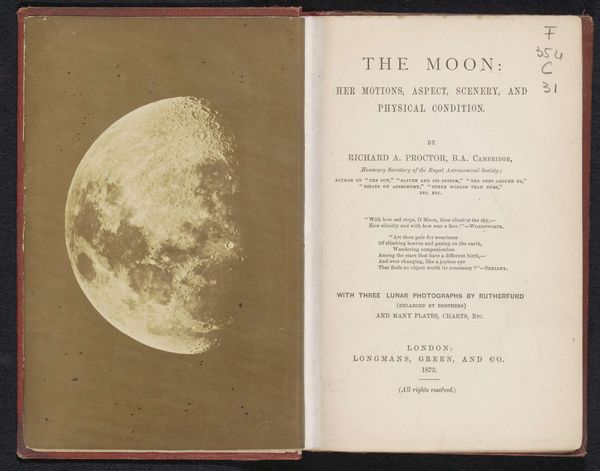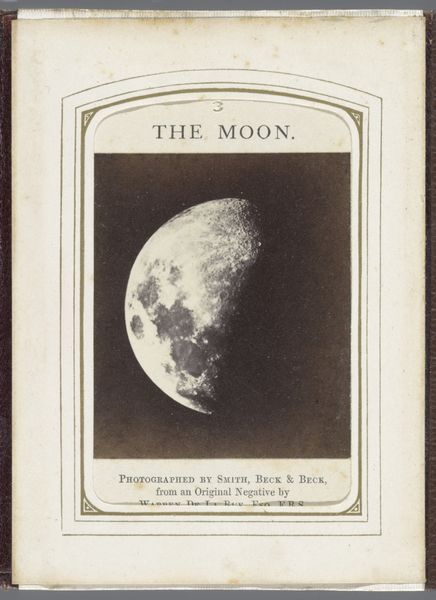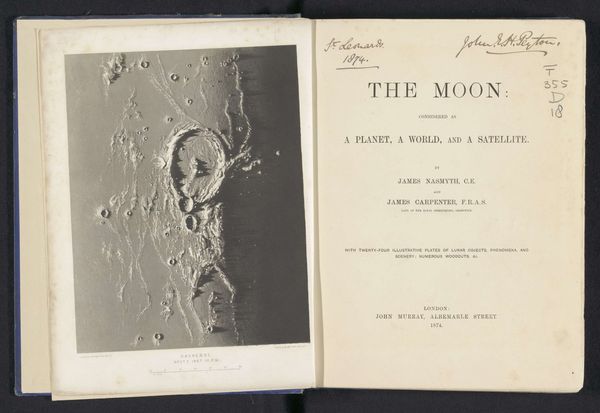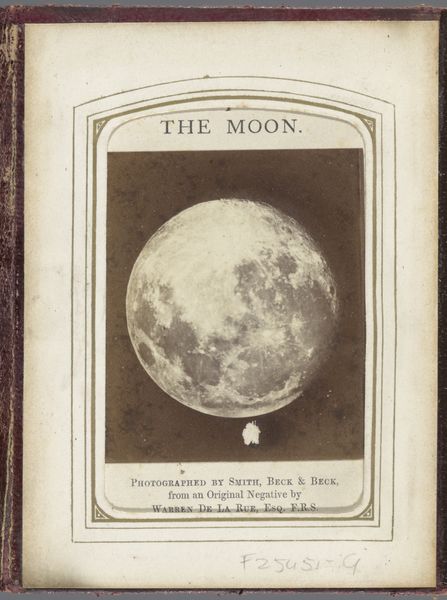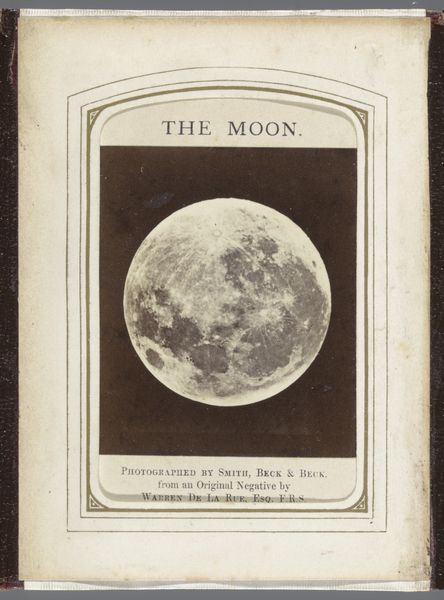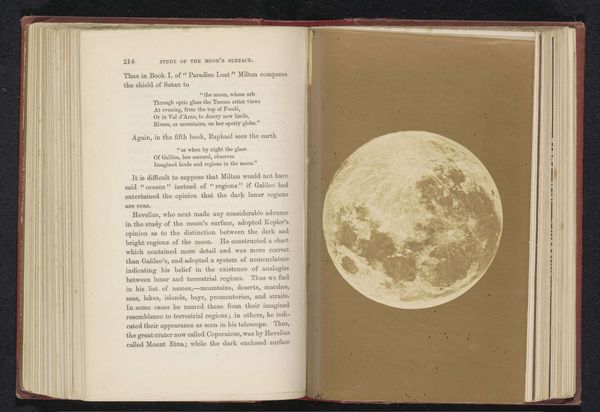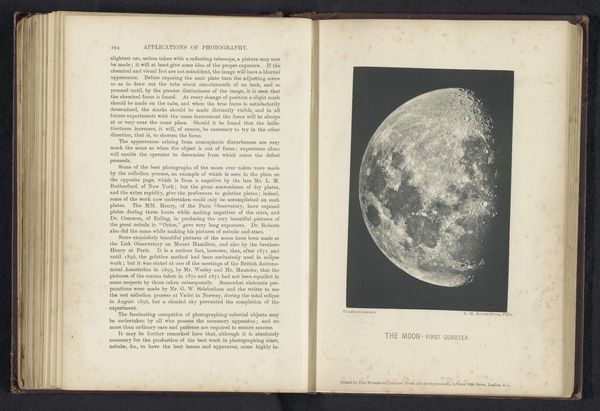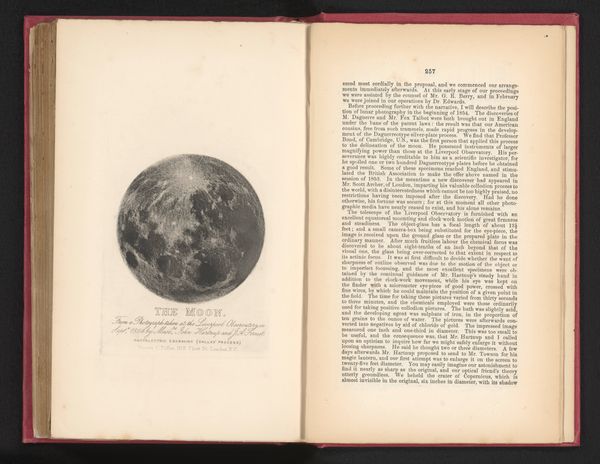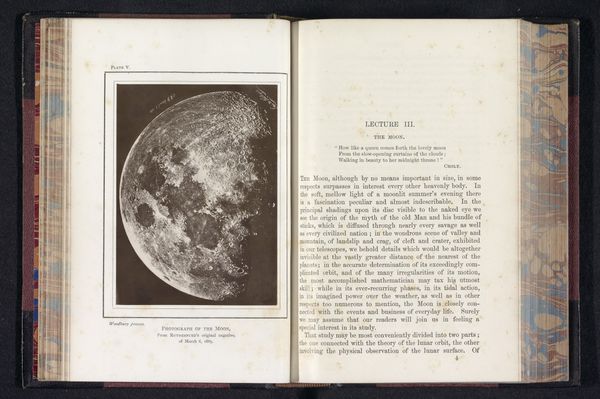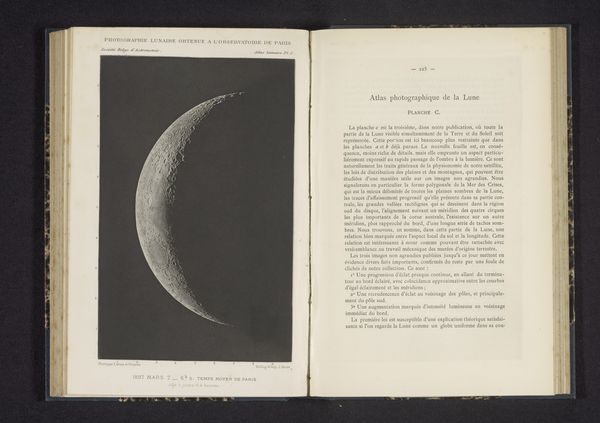
print, photography, gelatin-silver-print
#
aged paper
#
homemade paper
#
paperlike
# print
#
typeface
#
landscape
#
photography
#
personal sketchbook
#
fading type
#
orientalism
#
gelatin-silver-print
#
thick font
#
white font
#
delicate typography
#
academic-art
#
historical font
Dimensions: height 161 mm, width 97 mm
Copyright: Rijks Museum: Open Domain
Curator: What strikes me first is the vulnerability of it. It’s like staring at someone’s personal sketchbook, a fragile document. Editor: Precisely. What you’re sensing stems from the layering of different eras of knowledge production. We're observing "Maan in het eerste kwartier", a gelatin-silver print attributed to Lewis M. Rutherford, dated before 1886. Note the deliberate, material intersection of scientific exploration and book publication. Curator: A bit haunted, really. Like an astronomical observation rendered as a gothic romance cover. That contrast between the scientific intention, the pure data-driven inquiry and the rather old style typeface it’s printed with. There's something very romantic about it. Editor: Let’s consider that contrast a bit deeper. Rutherford, situated within the late 19th century academic tradition, participates in a moment when the cool authority of empirical science is ascendant, and yet its modes of dissemination still grapple with aesthetic and even spiritual ideals from a receding era. We see how “truth” and "beauty" are, historically, less distant. Curator: It also makes me consider authorship, like who is really seeing here? Is it Rutherford peering through the lens? Is it us, decades later? Or, even cheekier, is it the moon looking back? That textured lunar surface… it has stories of its own. Editor: That echoes current debates in postcolonial theory, concerning observation as a power relation, but also speaks to shifts within science toward distributed and crowd-sourced data. “Seeing,” as you frame it, extends beyond individual agency. Curator: Ah! And isn’t science all about questioning what you think you see anyway? Very meta. What I like best is the faded typeface; each character has lived a bit. It is both there and gone like moonlight. Editor: Absolutely, like knowledge itself, always under construction, under erasure, and, indeed, shining a reflected light on its sources. The decaying print here is like the etching of time on us as knowledge bearers. Curator: Well, this has me seeing the moon – and old science – with fresh eyes. Editor: Precisely; may our examination here nudge our viewers toward appreciating the intertwined trajectories that science and aesthetics share as ways to navigate, shape, and question our relationship to this world – and other ones.
Comments
No comments
Be the first to comment and join the conversation on the ultimate creative platform.

